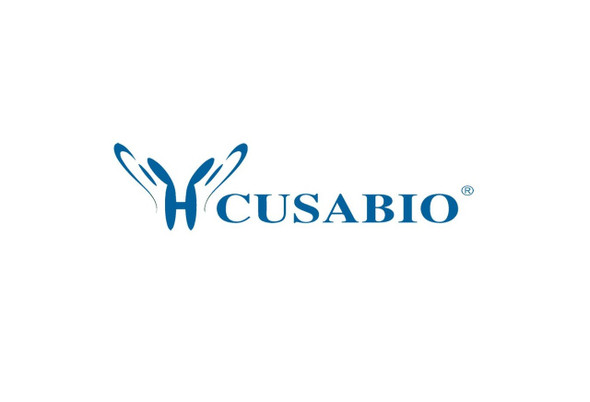Cusabio Mouse Recombinants
Recombinant Mouse Interleukin-11 (Il11), Biotinylated | CSB-EP011583MO-B
- SKU:
- CSB-EP011583MO-B
- Availability:
- 3 - 7 Working Days
Description
Recombinant Mouse Interleukin-11 (Il11), Biotinylated | CSB-EP011583MO-B | Cusabio
Alternative Name(s): IL-11
Gene Names: Il11
Research Areas: Cancer
Organism: Mus musculus (Mouse)
AA Sequence: PGPPAGSPRVSSDPRADLDSAVLLTRSLLADTRQLAAQMRDKFPADGDHSLDSLPTLAMSAGTLGSLQLPGVLTRLRVDLMSYLRHVQWLRRAGGPSLKTLEPELGALQARLERLLRRLQLLMSRLALPQAAPDQPVIPLGPPASAWGSIRAAHAILGGLHLTLDWAVRGLLLLKTRL
Source: E.coli
Tag Info: N-terminal MBP-tagged and C-terminal 6xHis-Avi-tagged
Expression Region: 22-199aa
Sequence Info: Full Length of Mature Protein
MW: 66.9 kDa
Purity: Greater than 85% as determined by SDS-PAGE.
Relevance: Cytokine that stimulates the proliferation of hematopoietic stem cells and megakaryocyte progenitor cells and induces megakaryocyte maturation resulting in increased platelet production (PubMed:8913282). Also promotes the proliferation of hepatocytes in response to liver damage (PubMed:22253262). Binding to its receptor formed by IL6ST and either IL11RA1 or IL11RA2 activates a signaling cascade that promotes cell proliferation, also in the context of various cancers (PubMed:10026196, PubMed:23948300). Signaling leads to the activation of intracellular protein kinases and the phosphorylation of STAT3 (PubMed:23948300, PubMed:22253262). The interaction with the membrane-bound IL11RA and IL6ST stimulates 'classic signaling', whereas the binding of IL11 and soluble IL11RA to IL6ST stimulates 'trans-signaling' (By similarity)
Reference: "Interleukin-11 is the dominant IL-6 family cytokine during gastrointestinal tumorigenesis and can be targeted therapeutically." Putoczki T.L., Thiem S., Loving A., Busuttil R.A., Wilson N.J., Ziegler P.K., Nguyen P.M., Preaudet A., Farid R., Edwards K.M., Boglev Y., Luwor R.B., Jarnicki A., Horst D., Boussioutas A., Heath J.K., Sieber O.M., Pleines I. Ernst M. Cancer Cell 24:257-271(2013)
Storage: The shelf life is related to many factors, storage state, buffer ingredients, storage temperature and the stability of the protein itself. Generally, the shelf life of liquid form is 6 months at -20?/-80?. The shelf life of lyophilized form is 12 months at -20?/-80?.
Notes: Repeated freezing and thawing is not recommended. Store working aliquots at 4? for up to one week.
Function:
Involvement in disease:
Subcellular Location:
Protein Families:
Tissue Specificity:
Paythway:
Form: Liquid or Lyophilized powder
Buffer: If the delivery form is liquid, the default storage buffer is Tris/PBS-based buffer, 5%-50% glycerol. If the delivery form is lyophilized powder, the buffer before lyophilization is Tris/PBS-based buffer, 6% Trehalose, pH 8.0.
Reconstitution: We recommend that this vial be briefly centrifuged prior to opening to bring the contents to the bottom. Please reconstitute protein in deionized sterile water to a concentration of 0.1-1.0 mg/mL.We recommend to add 5-50% of glycerol (final concentration) and aliquot for long-term storage at -20?/-80?. Our default final concentration of glycerol is 50%. Customers could use it as reference.
Uniprot ID: P47873
HGNC Database Link: N/A
UniGene Database Link: N/A
KEGG Database Link: N/A
STRING Database Link: N/A
OMIM Database Link: N/A









